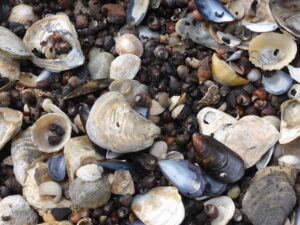
To my mind, to be a successful archaeologist you have to move beyond the norms by which you live. Of course the people of the past were people, just like us. But there can be no hard and fast rules where people are concerned. The search for universal rules of behaviour ultimately undermined the rigid application of middle-range theory in the 1980s, and we still need to be careful that we do not slip into the trap of assuming that just because we think ‘thus’, so the people of the past must have applied the same criteria.
A great example of this lies in the oft discussed ideas that stone circles were not necessarily conceived as ‘finished’ entities, and that the aim while building them may have been to employ more, rather than less, hours in construction. The act of building; the organisation; the ability to undertake tasks that did not simply relate to the production of food; the creation, transport and erection of a single stone: all of these may have been the statements that served to knit a community together and enhance its image in the eyes of its neighbours.
Twenty-first century ideas of efficiency cannot be applied to the past, even the recent past: consider how the construction of a cathedral may have so much more meaning imbued within it over and above the simple erection of a place in which to worship God. In the case of St Magnus Cathedral in Kirkwall it was indeed a building designed to shout out the glory of God. But it also set out to be a statement of the wealth and connections of the new Earl, Earl Rognvald, while at the same time serving to establish his power over and above that of the established church in the islands. It was, also, a visible promise to his new dependents: he would see to it that Orkney remained great and that their lives under him would flourish.
The same caveats work, even when we discuss humbler buildings. Homes, for example, have only in recent times evolved to include ideas of space and privacy that would have seemed very alien to many of our ancestors. They are not always recognised in cultures away from Britain today; my former family-in-law in Chile never really understood my occasional need for solitude. Today in the UK, we incorporate elements that are not actually ‘efficient’ into our structures; we could live cheaper lives and expend less energy if we had fewer rooms and made use of them to house more people. Modern ‘energy efficient’ architecture still has to incorporate twenty-first century norms of ‘the right way to live’.
A further example of behaviour today that might surprise our forebears lies in the regular use of the gym. What would they make of our tendency to spend hours working together, and yet never talk, simply to run, cycle, or walk without ever actually going anywhere? Of course, there is a point to it for us: the relentless drive to keep fit. But would that be obvious to the untutored outsider (which is what we archaeologists are)? I suspect that some sort of religious cult would be the most likely explanation, and maybe they would not be wrong.
It is quite fun actually to set yourself to thinking of other ways in which our norms may have been different in the past, and of ways in which our own activities might be misinterpreted. If you have not come across it, I thoroughly recommend David Macaulay’s book ‘Motel of the Mysteries’. It is a bit dated now but it is still a lot of fun and provides an important cautionary tale about leaving your own world behind when you delve into the world of the past. I think this is one of the reasons that many archaeologists enjoy Science Fiction: the creation of worlds is, after all, what we do.
Whatever your motives, remember that to be an archaeologist one of the most important attributes is imagination. As someone once said in a different context: you should always be prepared for the unexpected!
You must be logged in to post a comment.